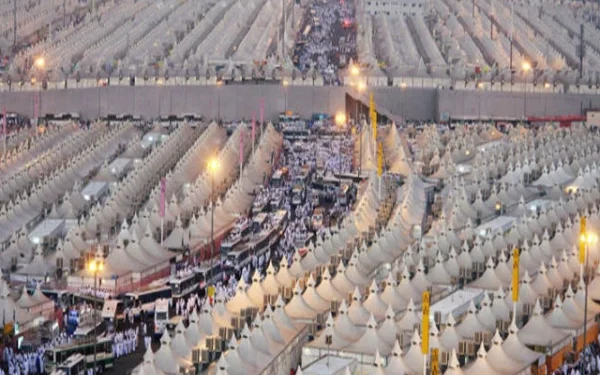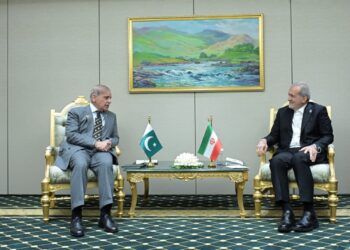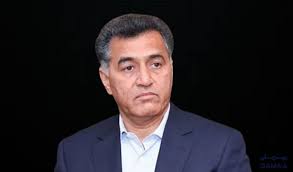Makkah – The sacred rituals of Hajj 1446 AH have officially commenced today, 8th Dhul-Hijjah, as millions of Muslim pilgrims from around the world begin their spiritual journey by proclaiming “Labbayka Allahumma Labbayk”—a powerful declaration of obedience and submission to Allah. The air in Mina, located just outside Makkah, is filled with spirituality as pilgrims begin the first step of what is considered the fifth pillar of Islam.
The Beginning of Hajj: 8th Dhul-Hijjah – Day of Tarwiyah
Today marks the Day of Tarwiyah, when pilgrims move from Makkah to Mina, a sacred valley approximately 8 kilometers away. This journey launches the formal rituals of Hajj, which will span five to six days. In Mina, pilgrims spend the day and night in prayer, supplication, and introspection, preparing themselves spiritually for the key rite of Wukuf-e-Arafah tomorrow on 9th Dhul-Hijjah.
Pilgrims reside in what is considered the world’s largest tented city, designed to accommodate millions safely and comfortably. These air-conditioned white tents are fireproof and equipped with basic necessities like water, electricity, and sanitation. They symbolize unity, equality, and humility, with pilgrims of all races, backgrounds, and nations dressed in the simple Ihram garments.
Over 2 Million Pilgrims Expected in Hajj 2025 (1446 AH)
According to official figures, more than 2 million pilgrims are participating in this year’s Hajj. This number includes foreign pilgrims from over 160 countries and domestic pilgrims from within Saudi Arabia.
Among the participants, tens of thousands have arrived from Pakistan, one of the largest contributors to the annual pilgrimage. The Pakistan Hajj Mission has mobilized significant resources this year to facilitate its citizens, including medical teams, guidance centers, and transport services.
The annual gathering represents not only one of the largest religious congregations in the world but also an unprecedented logistical operation managed by the Saudi Arabian authorities.
Wukuf-e-Arafah: The Spiritual Pinnacle of Hajj
On 9th Dhul-Hijjah, pilgrims will move from Mina to the vast plain of Arafat, where they will observe Wukuf-e-Arafah, the most significant ritual of Hajj. This standing at Arafat symbolizes the climax of the pilgrimage, as pilgrims raise their hands in prayer, ask for forgiveness, and reflect on their lives and deeds.
During this critical day, Sheikh Saleh bin Abdullah bin Humaid, a prominent Islamic scholar and Imam of the Grand Mosque in Makkah, will deliver the Hajj sermon at Masjid al-Nimrah. He will also lead the combined Zuhr and Asr prayers, a tradition observed by Prophet Muhammad (PBUH) during his Farewell Hajj.
The sermon is broadcast globally in multiple languages, allowing millions of Muslims around the world to witness this spiritual spectacle.
Medical and Emergency Preparedness for Pilgrims’ Health and Safety
Given the extreme summer temperatures and the dense concentration of people in a relatively confined area, health and safety measures are crucial.
This year, the Saudi Ministry of Health has made extensive arrangements, including:
- Establishing field hospitals, mobile dispensaries, and temporary clinics in Mina, Muzdalifah, and Arafat.
- Deployment of over 8 air ambulances to respond to medical emergencies quickly.
- Provision of tens of thousands of healthcare workers, paramedics, and volunteers.
Additionally, the Pakistan Hajj Mission has set up specialized medical centers in schools designated for Pakistani pilgrims. These centers are staffed with doctors, nurses, and pharmacists trained to handle heatstroke, dehydration, and other common ailments.
Public health awareness campaigns have also been launched to encourage hydration, hygiene, and COVID-19 preventive measures, although most restrictions have eased following the global pandemic.
Unprecedented Security Measures in Place
To ensure that the pilgrimage remains peaceful and orderly, the Saudi government has mobilized over 70,000 security personnel, including:
- 40,000 military personnel
- 30,000 police officers
- Special forces and riot control units
In addition, helicopters from the Royal Saudi Security Forces are conducting aerial surveillance over Makkah, Mina, Arafat, and Muzdalifah, monitoring crowd movements and traffic conditions.
These measures aim to address not just potential security threats but also crowd control, lost pilgrim support, and emergency evacuation protocols.
Crackdown on Illegal Hajj Attempts: Over 270,000 Turned Away
The Saudi government has adopted a zero-tolerance policy toward illegal Hajj attempts in 1446 AH. Authorities have prevented more than 270,000 individuals from entering Makkah without proper permits. These include both foreigners and Saudi citizens attempting to perform Hajj without registration.
The strict action is intended to:
- Prevent overcrowding, which can lead to stampedes and service breakdowns
- Ensure the safety and comfort of registered pilgrims
- Maintain regulatory discipline during the sacred days
Violators face severe penalties, including:
- Fines ranging between 50,000 to 100,000 Saudi Riyals
- Imprisonment
- Deportation in the case of foreign nationals
- Ban on entering Saudi Arabia for future pilgrimages
Saudi citizens involved in bringing unauthorized individuals to Makkah are also facing legal action, including fines and jail time.
Technology and Infrastructure Supporting Hajj Operations
Saudi Arabia has leveraged modern technology to enhance the Hajj experience. Several tech-based solutions have been integrated, including:
- Smart ID wristbands for tracking pilgrims
- Navigation apps to help pilgrims find their way between holy sites
- Real-time crowd monitoring systems using AI and surveillance tools
- Digital health records for medical facilities
The Ministry of Hajj and Umrah also operates a 24/7 support center, providing multilingual assistance to pilgrims in case of emergencies, confusion, or displacement.
Global Significance of Hajj: A Message of Peace, Unity, and Devotion
The Hajj pilgrimage is more than a physical journey; it is a spiritual transformation and a symbol of unity for the global Muslim Ummah. Regardless of nationality, race, or wealth, all pilgrims wear the same attire and perform the same rituals, reinforcing the message of equality before God.
It is also a time of global reflection, as Muslims across the world tune in to Hajj broadcasts, share in the prayers, and celebrate Eid-ul-Adha upon the completion of key rites.
Conclusion: A Journey of Faith, Resilience, and Global Harmony
The beginning of Hajj 1446 AH marks not only a sacred obligation for Muslims but also a testament to faith, organization, and international cooperation. As pilgrims begin their journey through Mina, Arafat, Muzdalifah, and Jamaraat, they represent the spiritual core of Islamic devotion.
With over 2 million pilgrims, state-of-the-art infrastructure, and strict regulations, this year’s Hajj promises to be a safe and spiritually uplifting experience for all involved.
The chant of “Labbayka Allahumma Labbayk” resonates through the valleys of Makkah, uniting millions in one voice and one purpose: to submit wholly to the will of Allah.

























